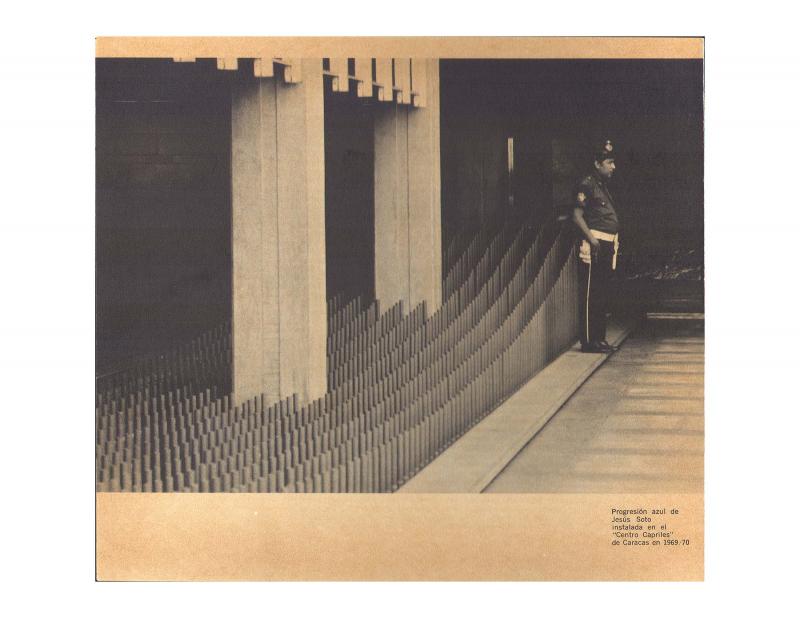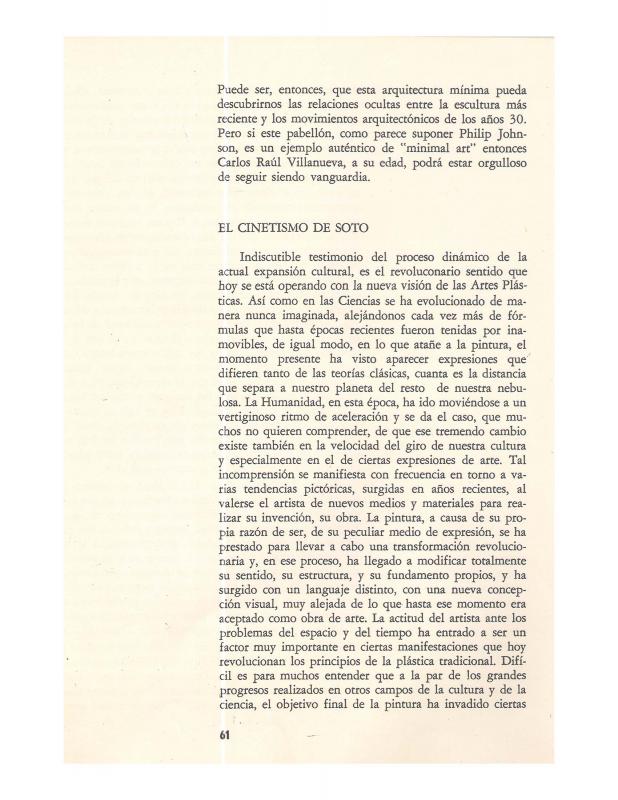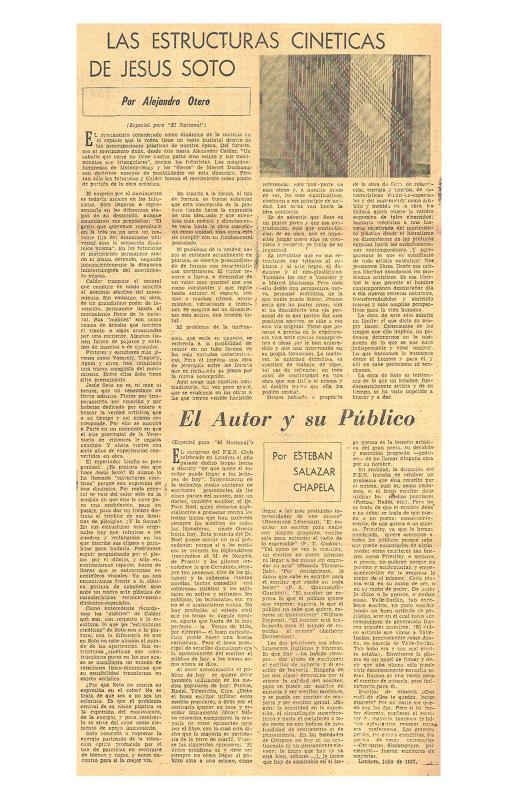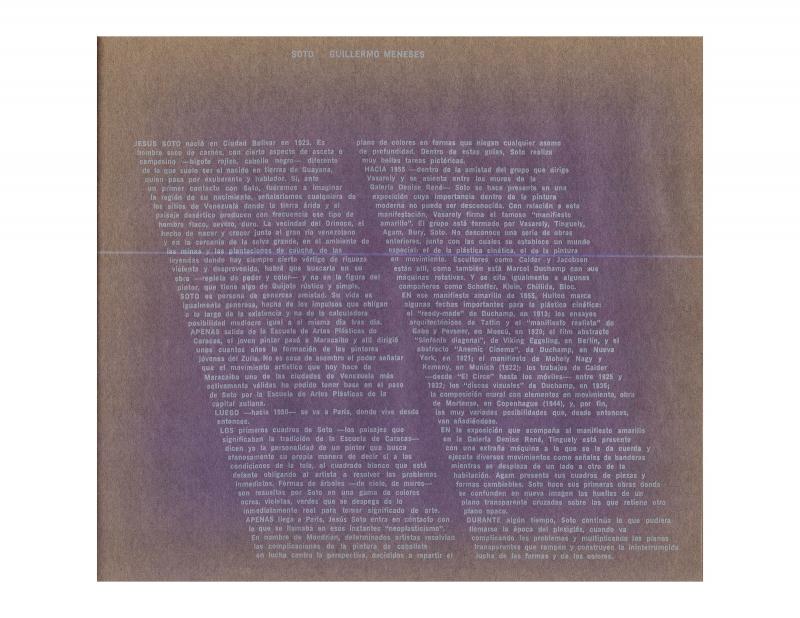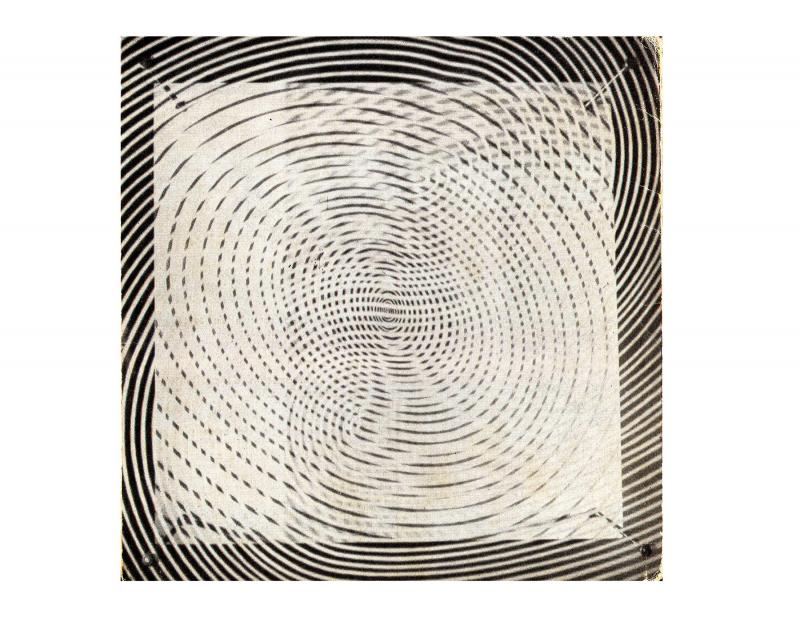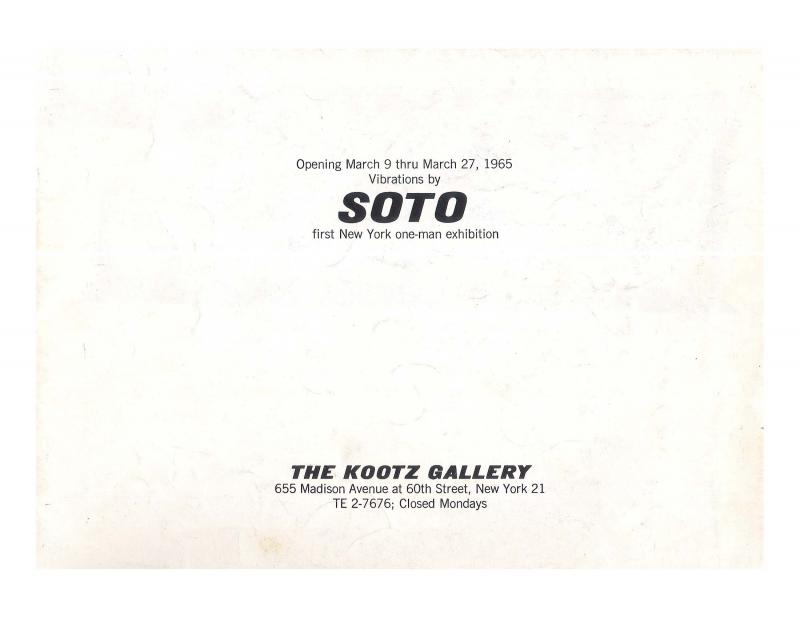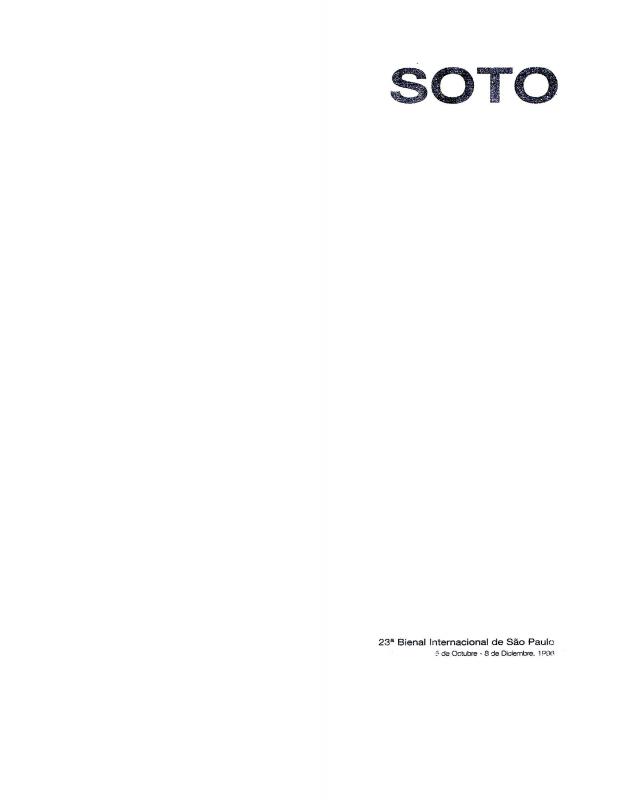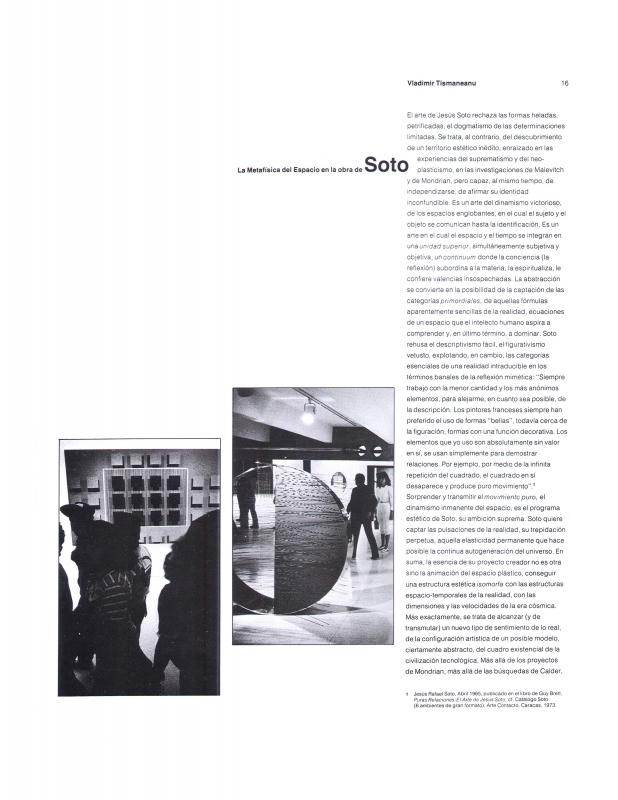The interview “New Readings of Reality” by the Venezuelan critic Roberto Guevara (1932–1998) with the Kinetic artist Jesús Rafael Soto (1923–2005) reveals certain aspects that are art historically significant. First, the interview as written up by Guevara creates a thread that runs through different periods of the artist’s art life. The theoretical hypotheses that underlie Soto’s work include movement, the time/space relationship, vibration, and the processes of materialization and deconstruction, concepts that have already been discussed on many occasions. They have been addressed in interviews, texts, and journalistic reviews, in Venezuela and in a range of foreign countries; however, these hypotheses are formulated here in minute detail, for didactic purposes. In this interview, the critic as well as the artist provide abundant explanation, examples, stories, and personal experiences that contribute to clarifying and expanding our knowledge of the life and work of this artist, born in Ciudad Bolívar. A particular case in point is Soto’s view of abstract art, moving closer to music (serial and twelve-tone), his investigations of art theory, as well as his study of other artists. Another interesting contribution here is an explanation of the artist’s process in developing major works such as La espiral, la Cajita de Villanueva, and El Cubo. The interview was conducted in connection with the twentieth anniversary of the Museo de Arte Moderno Jesús Soto in Ciudad Bolívar (August 1993). The celebration included the opening of a major new exhibition, with the president of the Republic, Ramón J. Velásquez, hosting the event. Visitors to the exhibition included personalities from the French cultural world. The interview was published in the book-length catalogue, La construcción de la mirada, along with three other texts: “La arquitectura del museo,” written by William Niño; “De la construcción racional a la existencia inestable,” by María Elena Ramos; and “Los artistas del museo,” by Freddy Carreño. When Guevara conducted his interview (1993), the maestro Jesús Soto was seventy years old. [For other texts on the artist Jesús Soto, see the ICAA digital archive: two texts by Alfredo Boulton, “Jesús Soto 1971” (doc. no. 1059661) and “El cinetismo de Soto” (doc. no. 1069749); an essay by Ariel Jiménez, “Jesus Soto: Lo visible y lo posible” (doc. no. 1073684); an article by Alejandro Otero, “Las Estructuras cinéticas de Jesús Soto” (doc. no. 850667); and texts by Guillermo Meneses, “Soto” (doc. no. 1080690) and “Soto: Estructuras cinéticas” (doc. no. 1059619); the essay, “Sin título” [text for the catalogue “Vibrations by Soto” issued by The Kootz Gallery 1965] (doc. no. 1069781); the text, Roberto Guevara, “La energía como realidad” (doc. no. 1102332); and a text by Vladimir Tismaneanu, “La metafísica del espacio en la obra de Soto” (doc. no. 1101524)].

